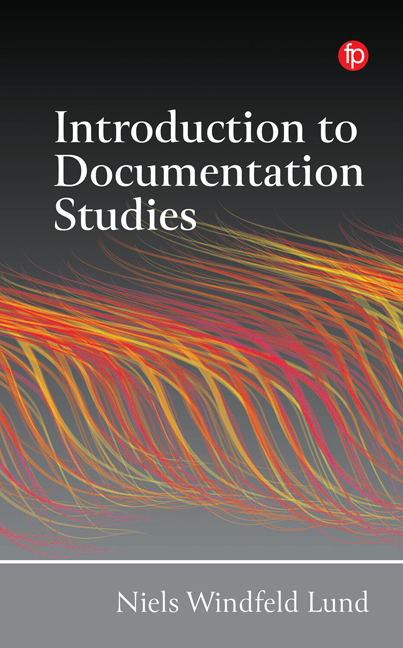 Introduction to Documentation Studies
Introduction to Documentation Studies 3 - A Model for a Complementary Documentation Analysis
Published online by Cambridge University Press: 28 March 2024
Summary
Introduction
In this chapter, I will distinguish between four different types of analysis. In all four analyses, all three complementary dimensions of documentation – the physical, social, and mental – and their interplay will be covered.
The first type of analysis is a diachronic analysis, where I dig into a defined complementary situation within a defined subsystem and follow the documentation process in time and space, the very creation of the document. I focus on describing the process and its distinct phases, including identifying the producers, means, and modes in making the document, and characterize it as a certain tradition of documentation. This diachronic analysis will be explorative, towards identifying complexes of agents, means, and modes, as well as a possible redocumentation process.
The second type of analysis is a synchronic analysis, where I focus on a specific document at a specific time and a specific place, acknowledging that this fixation of a document will always be approximate. I start with a short description of the document, title, date, and origin, and then classify it by determining several distinctive features, docemes, which make this document a possible representation of a number of classes of documentation forms. In practice, this analytical work proceeds as a hermeneutic circle, where one improves and elaborates more detail in each step of identification, description, and classification.
The third type of analysis is a comparative analysis in which I compare two or more different documentation processes and their resulting docu ments.
In the fourth analysis the focus is on conducting an experiment, where I examine not just a document and the documentation process behind it, but how to design and develop a documentation process and the possible resulting documents, alternative documents, and possible alternative processes behind these alternative documents. The core question is: ‘What happens if I change this and that? What will happen in each case?’ Through an experimental analysis, one can gain a deeper and critical understanding of existing document types and become able to make one’s own types of documents. Even without a full experimental environment, a laboratory, in which to conduct a variety of tests on the design of a document and different ways of using the means and modes of the documentation process, one can still consider the outcome of different types of documentation processes.
Information
- Type
- Chapter
- Information
- Introduction to Documentation StudiesComplementary Studies of Documentation, Communication and Information, pp. 35 - 44Publisher: FacetPrint publication year: 2024